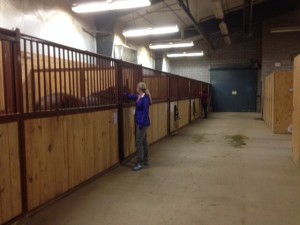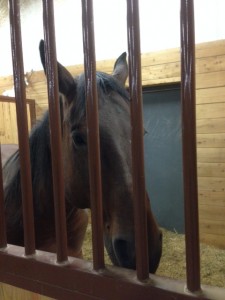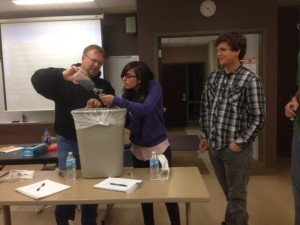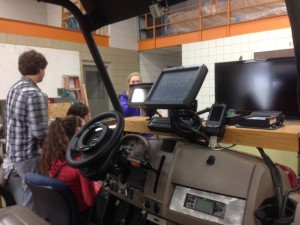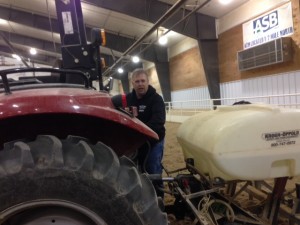Today was our first full day on this trip, and it was absolutely exhausting. We first started the day with some granola and fruit prepared by Dalona, and we then went off to Ellsworth Community College to learn about farm safety and precision agriculture with Professor Kevin Butt. He began the lecture by showing us photographs of accidents and telling us accident stories, and my over-thinking, city-oriented self believed that the tractor would spontaneously combust or tip over as soon as I touch it. However, it is entirely appropriate that we learn how to safely function on the farm, especially considering that farming is fourth on the list of most dangerous occupations in America. The lecture was very informative, but most farm accidents basically come from not having your mind completely on the present activity. If you need to remember anything, the trick to safe farming is staying focused, being aware, and following safety protocol.
After a short break, we then learned about swine unit safety and swine behavior. Because of the prominence of hog farms throughout Iowa and the spread of PEDV (porcine epidemic diarrhea virus), we had to learn about the proper way to clean before and after going to hog farms. PEDV has cropped up very recently across the country and is beginning to affect the hog supply in the U.S., by killing piglets. Spread by fecal particulates, it can infect an entire hog house in the span of minutes and even from farm to farm miles away in the wind. Other than as a source of income for farmers, hogs are also important because their manure can be and are often used as fertilizer for the crops on the farm. But pig manure is also dangerous to humans because the high levels of gases that can build up in the pits underneath hog barns and and compounds in the particulate are damaging to human lungs.
After lunch at the Princess Café in Iowa Falls, we stopped by the main campus where Mr. Butt showed us the technology associated with precision farming. Basically, precision farming means farming with a GPS to maximize efficiency and productivity per acre. It was fascinating to hear how precise it was. The highest tech machinery features automatic steering while also working within an inch of the desired rows in the field. Additionally, the “brain box” monitors how much seed is planted in what section of the field and how much a specific section produces. Mr. Butt hypothesizes that the next trend would be planting by drones. I was not aware of how high-tech farming could be, but all of the automation kind of reminded me of the human farming in The Matrix.
We ended the day by stopping at The Wallace House in Des Moines. This house was the home of Henry C. and Nancy Wallace, but it has since been converted into a restaurant that promotes local foods. However, this dinner was one of a weekly series of dinners called, “Food for Thought,” which “combines locally-sourced dining with conversation about food.” Each week, there is a new topic of conversation that is directed by cards left on the table as well as by a local expert on the subject. Today’s subject was Farmers Markets and the benefits of eating local. It is almost impossible to describe how good the meal was, so here is a link that describes the menu and the Wallace Center dining experience.
Stuart Nichols
P.S. I finally beat 2048.

